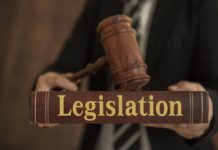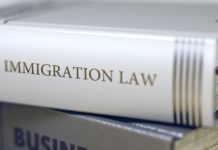Australia and Hong Kong signed the Australia-Hong Kong Free Trade Agreement on 26 March 2019, with implications for Labour Market Testing once the agreement is translated into domestic law
According to s 140GBA(1)(c) of the Migration Act 1958, Labour Market Testing (LMT) is not required for the approval of a nomination if it would be ‘inconsistent with any international trade obligation of Australia determined under subsection (2) to require the [nominator] to satisfy the [LMT] condition’.
Under s 140GBA(2), the Minister may, for the purposes of s 140GBA(1)(c), ‘by legislative instrument, determine (as an international trade obligation of Australia) an obligation of Australia under international law that relates to international trade, including such an obligation that arises under any agreement between Australia and another country, or other countries’.
Article 10.03 of the Australia-Hong Kong Free Trade Agreement reads as follows:
1. Each Party shall set out in Annex 10-A the specific commitments it undertakes for each of the categories of natural persons specified by that Party. The Parties may make commitments in respect of the temporary entry of natural persons.
2. Where a Party makes a commitment pursuant to paragraph 1, it shall grant temporary entry or extension of temporary stay to natural persons of the other Party to the extent provided for in that commitment, provided that those natural persons:
(a) follow the granting Party’s prescribed application procedures for the relevant immigration formality; and
(b) meet all relevant eligibility requirements for temporary entry to, or extension of temporary stay in, the granting Party.
3. In respect of the specific commitments on temporary entry in this Chapter, unless otherwise specified in Annex 10-A, neither Party shall:
(a) impose or maintain any limitations on the total number of visas to be granted to natural persons of the other Party; or
(b) require economic needs tests, including labour market tests, or other procedures of similar effect as a condition for temporary entry.
4. The sole fact that a Party grants temporary entry to a natural person of the other Party in accordance with this Chapter shall not be construed to exempt that natural person from meeting any applicable licensing or other requirements, including any mandatory codes of conduct, to practise a profession or otherwise engage in business activities.
However, Australia’s Annex 10-A still needs to be given effect by the introduction of domestic legislation before the LMT exemption for the above agreement becomes operative.
The Department of Foreign Affairs and Trade’s website includes the following announcement:
Australia-Hong Kong Free Trade Agreement
Australia and Hong Kong signed the Australia-Hong Kong Free Trade Agreement (A-HKFTA) and the associated Investment Agreement on 26 March 2019. These agreements mark a significant milestone in our already substantial trade and investment relationship.
About the Agreement
Australia and Hong Kong launched negotiations for an FTA on 16 May 2017. Hong Kong is a Special Administrative Region of the People’s Republic of China, and is able to enter into its own trade agreements.
We invited stakeholders to submit their views on the potential opportunities and impacts of an FTA with Hong Kong. See the Submissions page for more information.
Hong Kong was Australia’s twelfth largest trading partner overall in 2017, with total two-way trade in goods and services worth $18.8 billion.
Hong Kong is an attractive export destination for Australia. In 2017, Hong Kong was Australia’s sixth most important destination for merchandise exports ($12 billion) and seventh-largest services market ($3.0 billion).
Hong Kong is our fifth largest source of total foreign investment, with a stock of $116.6 billion at the end of 2017, and our tenth largest destination for total Australian investment, with a stock of $47.4 billion at the end of 2017.
Why did the Government negotiate an FTA with Hong Kong?
A strong relationship with Hong Kong is in Australia’s long-term strategic interests. The Australia-Hong Kong FTA will strengthen Australia’s relationship with one of its most significant trading partners. With the Australia-Hong Kong FTA, Australia now concluded FTAs with seven of its top eight export markets for goods and services.
The Australia-Hong Kong FTA will provide increased certainty for Australian service providers and investors. It will lock in continued access to the Hong Kong market for Australian exporters of education, financial and professional services. It will also guarantee that Hong Kong will not apply tariffs to Australian goods exports in the future.
What happens now?
After signature, Australia will follow the domestic treaty making processes to ratify the agreements. This will include tabling the text of the agreements in Parliament and an inquiry by the Joint Standing Committee on Treaties (JSCOT).
Disclaimer: the above is a mere extract of a court decision. The views there expressed might not reflect the views of the Department, the AAT or the courts. The law or policies might have changed between the writing and reading of this article. The author of this article and Migration Law Updates disclaim any liability for any action (or omission) on their part based on any information provided (or not provided) in this article and are under no obligation to keep the general public nor practitioners informed about the matters discussed in this article or any other matters, or any future changes to any of those matters. It is the responsibility of each practitioner to obtain access to primary sources of law and policy by themselves and to carry out their own research and come to their own conclusions on legislation, case law, policies and more. This article is not intended for the general public.
Sergio Zanotti Stagliorio is a Registered Migration Agent (MARN 1461003). He is the owner of Target Migration in Sydney. He can be reached at sergio@targetmigration.com.au











